
An older generation dismissed him as rigid, inflexible, with a “dark side.” The present generation which holds little value or meaning for “history,” so wrapped up are they in a puffery-prone life. However, the book, Gunned Down, The Murder of an Olympic Champion, which I wrote on and off for more than six years, delivered an unsettling message: Do we even understand our sporting stars?
Prithipal Singh, the Olympic champion at the heart of this story, played three Olympic Games, winning a silver (1960), a gold (1964), and a bronze (1968). Forty-one years later, those who were close to him still grapple with his gory murder. Pargat Singh, a former double-Olympic captain and now a Congress MLA in Punjab, analysed the tragedy: “We as a nation know how to make heroes, but unfortunately don’t know how to take care of them.”
Should an athlete who has reached the pinnacle—a multiple-time national champion, Olympic, or Asian Games medallist—go back into sports as a coach, a mental trainer, or pursue a sports management degree? Or should they waste their enormous sporting experience in innocuous day jobs?
O.P. Singh, Director General of Police, Haryana State Narcotics Control Bureau, and a former Sports Director, points out that “most don’t fit into the police or other professions, but we force them into it instead of using their experience in sport, or coaching, or even ensuring that they branch into different fields pertaining to sport.”
Taking Prithipal Singh as an example, O.P. Singh explained: “Don’t you feel that his experience on the short corners would have benefited the next generations of players in the state and nation-wide, but we pushed him into working in a university of which he had no experience. And see where it led him.”
Prithipal got caught in the middle of student politics and was killed—perhaps an extreme example of a person not fitting into a system. Yet, it is something to consider.
In India's 1.4-billion-strong landscape, it's also a story of culture, of coming from humble backgrounds and bringing a family from the lowest rungs of society to respectability, as society defines it. A certain star culture is created. In states like Punjab and elsewhere, police jobs are highly coveted; they give power, allow a player to wield influence, and the khaki uniform is a throwback to the "national team shirt" and the awe it created among lakhs of adoring fans. The player then looks to recapture their glory and preserve their legacy. Some, like former Indian captain and 2014 Asian Games gold medallist Sardara Singh, a connoisseur who drives a Defender, are caught between being a Haryana Police DSP and a further calling; he is presently the India U-18 coach.
Pargat, himself, earlier in his career joined the police as a DSP but then shifted to being Sports Director, where his work was lauded. Many in the state credited him with the rise of a positive sports environment, which also included creating a hockey sub-culture at the sub-junior level that fed the national teams of the 2016, 2020, and 2024 Olympic teams—a massive achievement in itself.
“There is a three percent sports quota in every state department. And I guess most states have the same, but it could vary,” Pargat says. “If we bring all the sports persons under the sports department, imagine the excellent work that can happen. They can be adjusted according to achievements and education. Each and every person can pursue what their expertise is.”
Amiya Kumar Mallick, the former national 100m record holder, believes ultimately it is up to the athlete to pursue a profession after retirement. “As an international athlete, I’ve experienced both the glory and the struggle that come with representing the country. The question of what happens after retirement is critical. While some athletes are pushed into jobs like the police or public service, not all of us are suited for that path,” Amiya explains.
“The key is choice. Athletes should be supported to transition into whatever they’re passionate about—within or beyond sport. Personally, I’d like to stay connected to athletics, helping young sprinters and giving back to the sport. But above all, we need a system that respects and supports whatever path an athlete chooses after retirement.”
Gian Singh, who competed in the men’s freestyle 62kg at the 1984 Los Angeles Olympics, prefers to balance career choices and says “rigidity” cannot be a factor for choice. “There are many top-level sportspersons in various departments in the Delhi government, and some are in Delhi Police too,” says Gian, who himself retired as a senior sports officer in the Railways Board. “A few do rise in the ranks while others continue doing a job which is like a reward for what they achieved as a sportsperson.”
Gian emphasises that all top sportspersons cannot be good coaches and some “don’t want to pursue sports as a profession after their careers are over.”
Recruitments have been squeezed over the last decade, making choices for sportspersons extremely difficult. Om Prakash Singh Karhana, the 2009 Asian Athletics Championships shot put gold medallist, says when people say that only sports should be the calling card for sportspersons, they are not understanding the situation in different parts of the country. “Sometimes, lack of education is an issue,” Karhana believes. “Most join sports at an incredibly early age and by the time they retire, they see that education has been left out. Now how do you fit them in? Some do well in companies like ONGC and have received awards and commendations. But most departments feel that sportspersons get the job for free and that negativity spreads killing interest.”
“It's the transition period that is not scientific,” says Karhana.
Pargat gives the example of former Indian hockey captain and his wife Avneet Kaur Sidhu, a Commonwealth Games gold medallist and 2008 Beijing Olympian. “When they were recruited by Punjab police as DSPs, I called and advised them to join the sports department as Deputy Director. I did feel that they could give back something to sports. But Avneet said she prefers the uniform. It’s their choice but I felt that sports had lost their experience.”
Apart from glamour, security, and a career, “perfectionism” is something we don't tackle after a player’s retirement. For years together, a bunch of athletes pursue it. A majority fail. A few reach what they believe is “perfectionism,” an Olympic gold or a World Championship medal. For certain athletes, like Prithipal Singh himself, finding perfectionism in a world afflicted with rage, hatred, and im-mature students, in his case, it can fast turn into a game of one-upmanship or other professions. Perfectionism driven in the sporting field could be an extension of the athlete’s post-retirement life.
Post-retirement, relinquishing that perfectionism is difficult. It does become an internal battle, a relentless self-destructive drive.
Pargat believes that the glamour of sports is more than the glamour of a mere uniform. “Even after being in politics, being elected to the state legislature, I believe the Arjuna Award, the Padma Shri are more prestigious than ranks or mere political offices.”
(Sundeep Misra’s book Gunned Down, the Murder of an Olympic Champion has just been released)
Newer articles
Older articles
 Gavaskar Calls for Kuldeep Yadav's Inclusion in Second Test Amid Bumrah Fitness Concerns
Gavaskar Calls for Kuldeep Yadav's Inclusion in Second Test Amid Bumrah Fitness Concerns
 Early Warning Signs: 5 Heart Attack Symptoms to Watch Out For a Month in Advance
Early Warning Signs: 5 Heart Attack Symptoms to Watch Out For a Month in Advance
 Oral Cancer: Spot the Signs, Understand the Risks, and Why Early Detection is Key
Oral Cancer: Spot the Signs, Understand the Risks, and Why Early Detection is Key
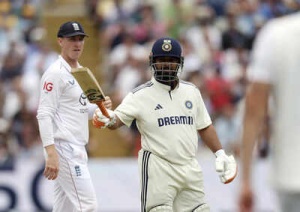 Rishabh Pant's Composed Reply Deflates Harry Brook's Sledge in Edgbaston Test: Watch Key Moments
Rishabh Pant's Composed Reply Deflates Harry Brook's Sledge in Edgbaston Test: Watch Key Moments
 FIFA Club World Cup 2025: Upsets, Messi Magic, and 2026 World Cup Concerns Emerge From Group Stage
FIFA Club World Cup 2025: Upsets, Messi Magic, and 2026 World Cup Concerns Emerge From Group Stage
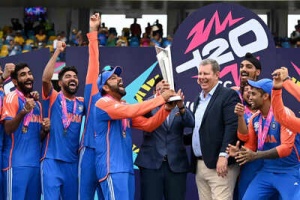 Rohit Sharma Credits Barbados as India's Lucky Ground After T20 World Cup Triumph
Rohit Sharma Credits Barbados as India's Lucky Ground After T20 World Cup Triumph
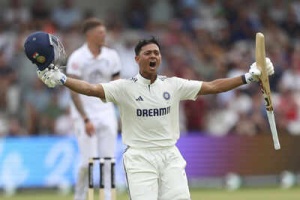 Jaiswal Aims to Eclipse Gavaskar's 49-Year-Old Record in Edgbaston Test Showdown
Jaiswal Aims to Eclipse Gavaskar's 49-Year-Old Record in Edgbaston Test Showdown
 Science-Backed: Simple Habits for a Stronger Heart, According to Experts
Science-Backed: Simple Habits for a Stronger Heart, According to Experts
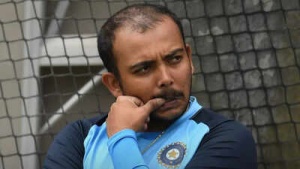 Prithvi Shaw Admits to Missteps, Lost Focus Amid Career Setbacks
Prithvi Shaw Admits to Missteps, Lost Focus Amid Career Setbacks
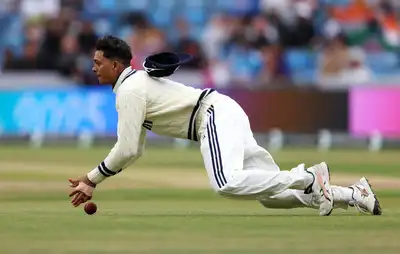 India's Fielding Failures Under Scrutiny After First Test Defeat to England: Former Selector критикует Dropped Catches
India's Fielding Failures Under Scrutiny After First Test Defeat to England: Former Selector критикует Dropped Catches